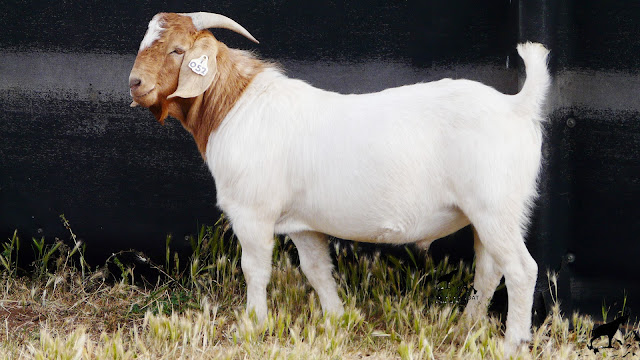 |
| Benifits of boer goat rising himalayan goat breeding farm |
Boer goats are survivors, because they evolved in the dry tropics. They’ve devised all kinds of ways to live in a difficult environment where there are not many foragers but plenty of browse and shrubs. They spend a lot of time browsing rather than grazing. And many of their browse plants contain noxious compounds so Boer goats have evolved by devising ways to dilute these noxious compounds. If you compare a goat to a cow and put them in a grazing situation or give them a choice, cows are going to eat the same thing most of the day. Goats like a “buffet.” They like to move from one species of plant to another. This is a way for them to dilute some of the noxious compounds they pick up in plants. It’s a common misconception that goats are a lot like sheep – but they are actually quite different. Their nutritional requirements are different. As smaller animals, goats need better foragers and higher quality feed than sheep.
2. Are Boer goats easier to raise than other breeds of goat?
Boers have mild temperaments, are affectionate, and require no milking, no special care and no shearing. Goats in general can survive under adverse foraging conditions, setting them apart from other livestock. Boers, developed for meat and hardiness, are large-framed and resemble Nubian goats. They consistently produce more muscling in less time than other goat breeds. Boers were developed to clear land that was too tough to be cleared by humans, and they spend a lot more time grazing than other goat types. They're out in the heat of the day when dairy goats stay in the shade, and they graze in blowing snow. Boers thrive on ground that won't support dairy goats without supplementation. Boer goats in their first 12 months can grow 200 g/day under good pastoral conditions. Faster-growing rates mean Boers reach marketing weights more quickly. (Carcass quality, however, is key to capturing maximum market returns.) Boers reach breeding weights fast. They have an extended breeding season, and does can have 3 kiddings every two years. About 50% of does produce twins and another 10% to 15% produce triplets. Boers are good milkers, allowing them to raise multiple offspring with excellent weight gains, with little pre-weaning mortality. Boer female kids can reach puberty at 6 months of age and are considered early breeders. Male kids can be used for breeding at 5 to 6 months of age but reach puberty or a body weight of 32 kg as early as 3 to 4 months of age. Boer breeders say that their kids are ready for market sooner, and their customers will pay a premium for meat goats if they add Boer blood to their herd. Compared with other goat breeds, Boers put on more weight and generally look fuller and healthier. At the butcher, if a customer sees a Boer goat along side another breed, the Boer is often purchased before being butchered. 7 Continuous improvement in genetic selection, feeding methods and management systems suggest that growth rates in Boers, as well as their crosses, will only increase. Because of their desirable traits for meat production, Boer goats have raised the performance of indigenous breeds through cross breeding so that indigenous goats have seen improvements in birth weights, growth weights, weaning weights, breeding weights, mature weights, kidding rates and carcass quality. Here are some other reasons why Boers are a great breed to raise: Efficiency of feed and space. With 10 acres, a producer can raise 60 goats or ten head of cattle. Boers (or Boer crosses) can prosper on poor pasture and brush that would not support cattle. They eat berry bushes, Russian olive, elm or cottonwood trees, ragwort, gorse, dock and other weeds. Some ranchers run goats on the pasture after their cows--to clean up the weeds. Returns for raising Boer goats are generally higher than for cattle. You don't need expensive squeeze chutes for goats, and it's easier to own a buck than a bull and to artificially inseminate a doe than a cow. Many people raise milk goats because they like goats. But it takes less time to feed 100 goats than to milk ten. Raising Boer meat goats is an option to consider if you don't want the trouble of milking, The stress-coping mechanisms of Boer goats are strong and equivalent to those of hardy Merino sheep. Boers are tame, gentle animals and the more you handle them, the gentler they become. Of course, a wide variation in personalities exists between animals in a herd, and while a few Boers may be flighty, others want to stand and be scratched.
3 Are Boer goats easier to breed than other goat breeds?
Breeding Boer goats is generally no easier or harder than other breeds, especially since the current herds have much stronger genetics than when the breed was first brought from South Africa. 8 Choosing an exceptional buck and pairing him with average females, and providing the pregnant does with high quality feed, is generally all that’s needed to produce strong offspring that will continue to improve the flock.














